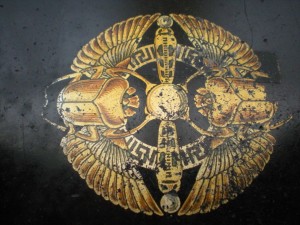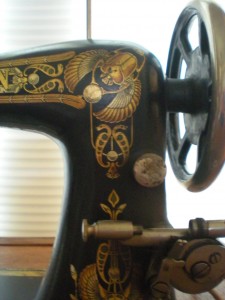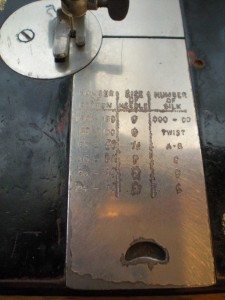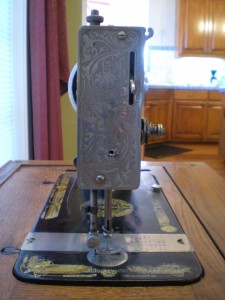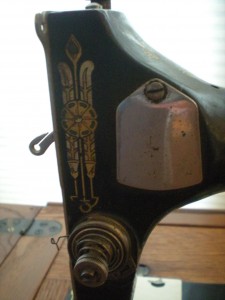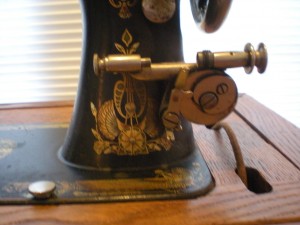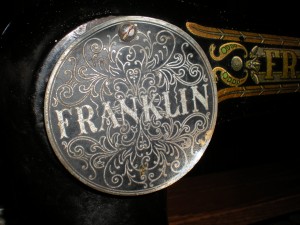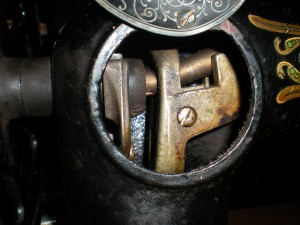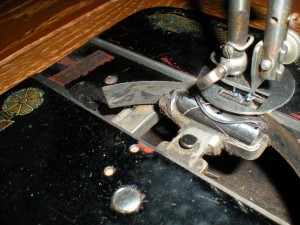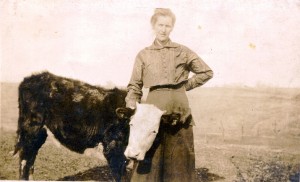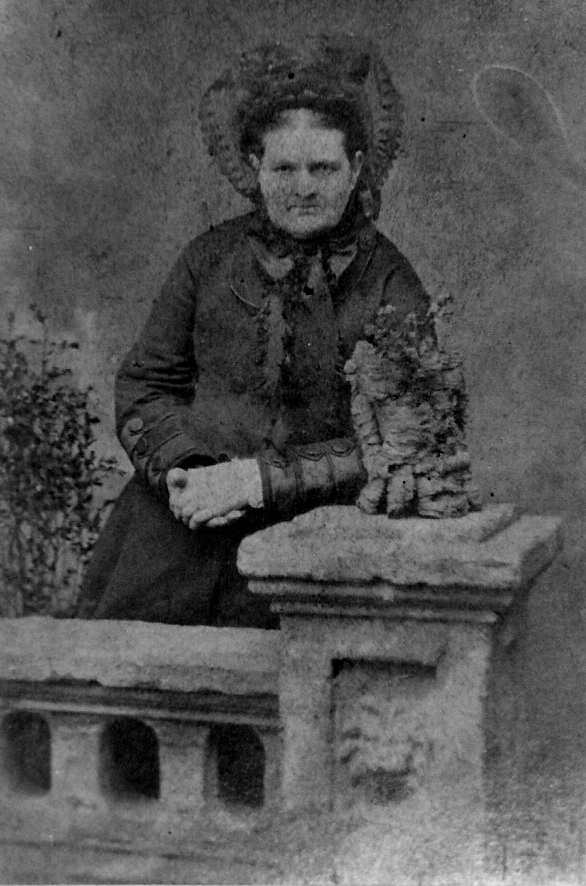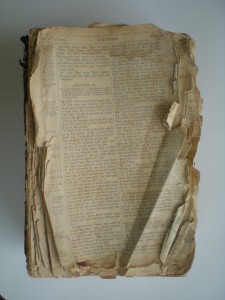Sepia Saturday provides bloggers with an opportunity to share their history through the medium of photographs. Historical photographs of any age or kind become the launchpad for explorations of family history, local history and social history in fact or fiction, poetry or prose, words or further images. If you want to play along, sign up to the link, try to visit as many of the other participants as possible, and have fun.
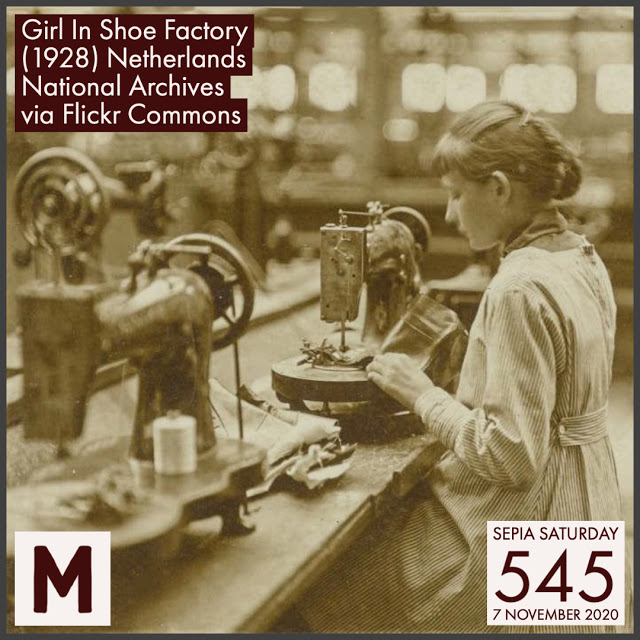
I’m reusing an old entry to fit the Sepia Saturday prompt for this week. The original post date is almost exactly eight years ago – Nov. 15, 2012. Please enjoy what others have pieced together for this prompt by visiting Sepia Saturday.
I think the camera on my phone takes better pictures now than the camera I used eight years ago. You can click to enlarge most of the photos. The original post follows:
Karen at Ancestor Soup has been sharing pictures of her grandmother’s sewing machine this week, so I decided to join her and we can compare.
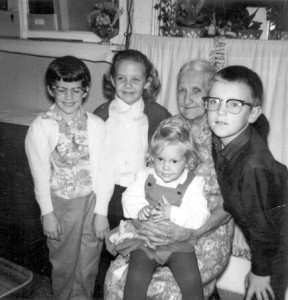 Grandma’s sewing machine sat at the entryway into her kitchen, right below the mirror where Grandma fixed her hair every morning.
Grandma’s sewing machine sat at the entryway into her kitchen, right below the mirror where Grandma fixed her hair every morning.
That indistinguishable blackness behind and on the left of cousin Deb is Grandma’s sewing machine cabinet with a decorative linen on top. Although I was a little too short to see into the mirror very well, I stood in front of the closed sewing machine cabinet most mornings so Grandma could comb my hair. The shelf just below the mirror is where she kept her pearl blue comb and some bobby pins. The rubber band to hold my pony tail waited on the sewing machine cabinet so I could hand it to Grandma at the proper time.
That’s not Grandma Eveline in the picture, by the way. The woman is Eveline’s mother, Mary Harris Coates, pictured with her great-grandchildren. I’m the one sporting the modified peeled onion look. It’s unfortunate that I can’t find a better picture of the sewing machine in Grandma’s kitchen.
Grandma’s sewing machine is a Franklin. The International Sewing Machine Collector’s Society website provides the following information on it’s page about Sears: Beginning in 1911, the company introduced a number of machines based on Singer designs. They were the ‘Franklin’ (1911) and the ‘Minnesota A’ (1914), copies of Singer’s Model 27/127 class manufactured by the Domestic Sewing Machine Company of Buffalo, New York. The ‘Franklin’ was decorated with Egyptian styled decalcomania, clearly in imitation of Singer’s beautiful ‘Memphis’ decoration scheme. The ‘Minnesota’ was decorated in the same type of gold filigree used on the Davis-made ‘Minnesota A.
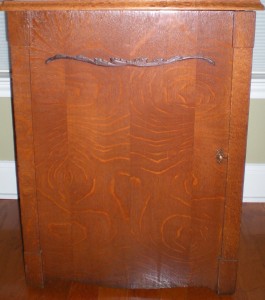 The machine folds down into the cabinet. The finish on the cabinet had turned dark and tacky with age, so my sweet husband had it refinished as a gift to me, leaving it with this beautiful oak finish.
The machine folds down into the cabinet. The finish on the cabinet had turned dark and tacky with age, so my sweet husband had it refinished as a gift to me, leaving it with this beautiful oak finish.
Here you can view an advertisement from the 1916 Sears Catalog for a Franklin sewing machine that looks just like this one. And here is an ad for this cabinet style, called the “Sit-right.”
I don’t know when or from where Grandma got her sewing machine. The Sears Catalog seems likely.
The Franklin sewing machine is decorated with a colorful Egyptian scarab design. I saw one for sale on the internet that referred to this as “The Tumble Bug” sewing machine.
Grandma didn’t use her sewing machine much when I lived with her, but I know she used it countless times to make clothes for her children and herself. There are many indications of wear and use.
I never knew Grandma to buy a pattern – she made her own – or sometimes just measured and started cutting. And yes, she used flour/feed sacks to make clothes for her kids. Flowers for the girls and not flowers for the boys. Mom told me about a fancy dress she wanted for a dance or some special occasion. Grandma went to the store, looked at the dress Mom wanted, and then made one just like it.
 I remember Grandma making a doll dress for me. It was yellow with black trim. Short sleeves, tucks enhancing the bodice, and a full skirt. I need to find out if that dress is still at Mom and Dad’s. Even as a little girl, I was impressed by Grandma’s ability to make that dress with no pattern. And I remember – just a little – the sound of the treadle moving the needle up and down.
I remember Grandma making a doll dress for me. It was yellow with black trim. Short sleeves, tucks enhancing the bodice, and a full skirt. I need to find out if that dress is still at Mom and Dad’s. Even as a little girl, I was impressed by Grandma’s ability to make that dress with no pattern. And I remember – just a little – the sound of the treadle moving the needle up and down.
Unfortunately the belt that makes it all work is broken. You can see it hanging loose down inside the cabinet. It should run up through the hole on the left top, around the middle of the hand wheel, and back down into the cabinet through the hole on the right.
There is just so much beautiful detail – like the plate on the end. (You can click to enlarge.)
The belt from the treadle also powered the bobbin winder above right. You can read more about early Singer sewing machines and knockoffs at Wikipedia.
Above is a cover on the back of the machine. I don’t know what’s inside, but Grandma must have needed to get in there for some reason as the cover plate is bent along the edges as if she had used a screwdriver to pry it open.
From what I can gather, this was a “vibrating shuttle”. Looks like it needs cleaning!
And here is the bobbin shuttle from inside the machine. You can barely see the long bobbin sticking out the left side.
That’s enough for today. More on Eveline’s sewing machine to come.
I’d love to hear about the sewing machines in your family, so please leave a comment!
Edit: I found the beginning of a draft for a follow-up to this post. Just one paragraph:
One day Grandma decided I was old enough to learn how to sew on buttons. I was wearing a favorite dress at the time and sitting on the davenport – as she called it. Grandma gave me a button or two to practice sewing on a scrap of fabric. I was very proud of myself…. until I realized that I had sewn the whole thing to the dress I was wearing – a favorite dress at that. I’m not sure if that was one of the occasions that I ended up being sent to my room, but I think it might be. If I started whining too much or crying about something that didn’t need to be cried about, Grandma would send me to my room so she “wouldn’t have to hear it.”
I have no idea what I had in mind for the rest of the post!


